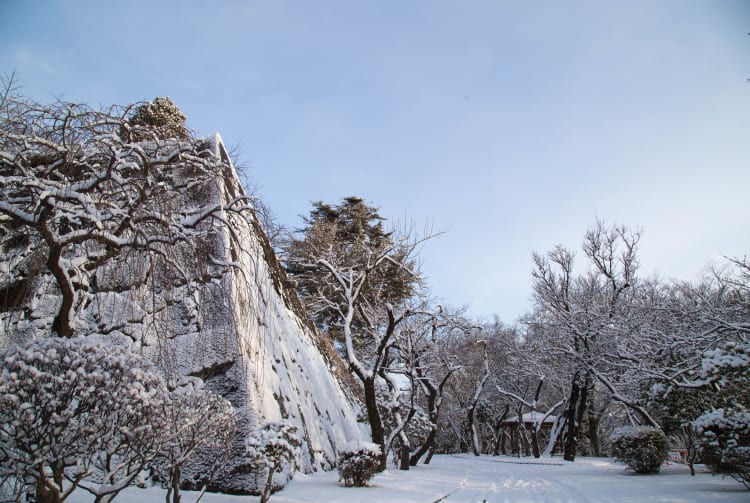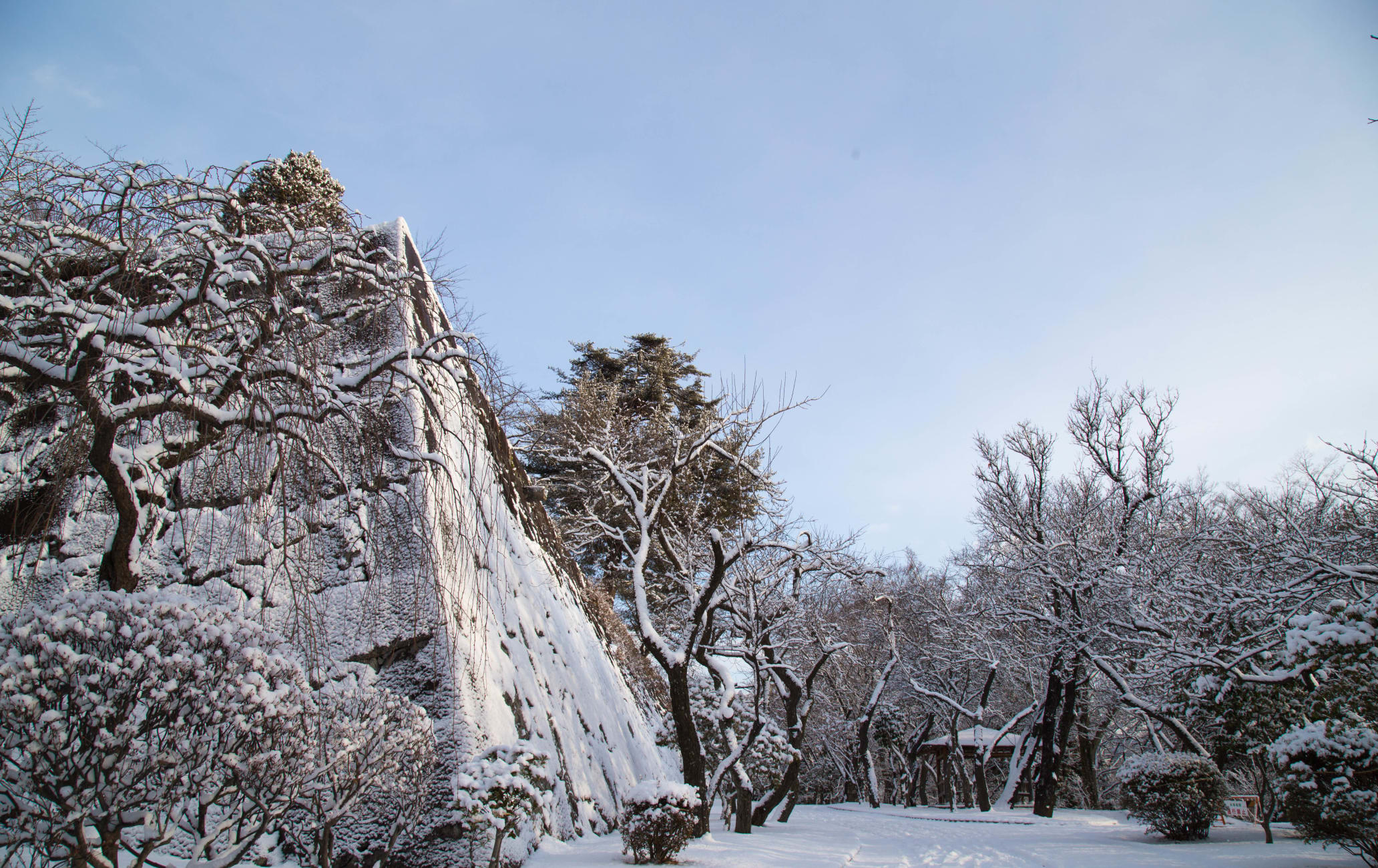Relax and enjoy the scenery among castle ruins
Once upon a time, a giant castle dominated the Morioka skyline. Now a park has taken its place atop the hill that the Morioka clan chose as their base of power. The original buildings are gone, but the memory of the castle lives on in its stone walls.
How to Get There
Morioka Castle is accessible by bus or taxi from JR Morioka Station.
The Morioka City Loop Bus stops at the Morioka Joato Koen (10 minutes from Morioka Station). Or you may decide to walk (15 to 20 minutes).
Quick Facts
Construction of the castle started in 1597 and was completed in 1633
In 1874, most of the buildings were demolished by the Meiji government
Emperors, shoguns, and warlords
The castle was built by the Morioka clan around a small hill where two rivers meet. As an important location for trade, the castle dominated the city for over 200 years. Unlike other castles in the Tohoku region that have earthen walls, Morioka Castle's stone walls were built from granite mined from the area around the castle.
Today, the stone walls and a storehouse are all that remains of Morioka Castle. After the Boshin War ended in 1871, the Meiji government consolidated its power by abolishing domains and removing castles in lands that had opposed the government. Morioka Domain became Iwate Prefecture. Although Morioka Castle was allowed to remain, it was demolished due to neglect in 1874.
Death and rebirth of a castle park
After the Meiji government tore down the castle and its surrounding buildings, the land sat idle for thirty years, until park designer Yasuhei Nagaoka turned the grounds into what is now Iwate Park .
From 1906, Iwate Park has been open to the public. Since then, the grounds surrounding Morioka Castle have become a popular site for cherry blossom viewing, seeing the fall leaves, and poets. Two poets in particular, Takuboku Ishikawa and Kenji Miyazawa, loved the castle ruins and wrote many works about them. Today you can see monuments to both poets on the castle grounds.



























































